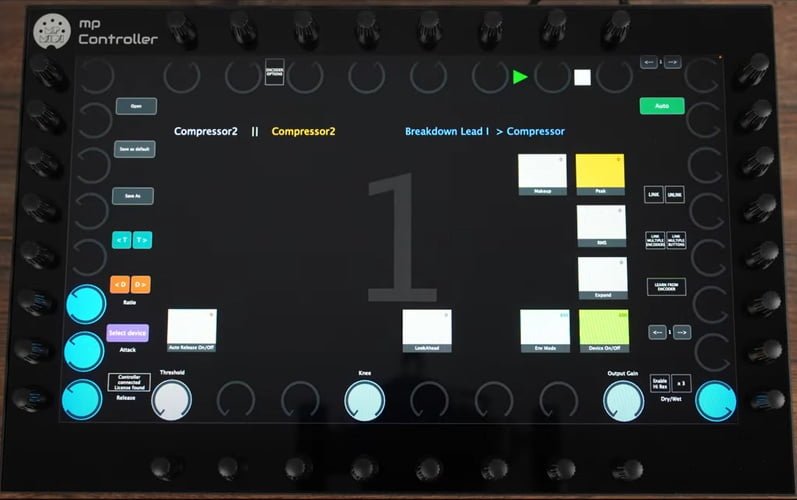MP MIDI has announced an update for its flagship controller hardware, which can now control Ableton native devices, Max for Live devices and third party plugins.
Originally focusing on controlling VST2/VST3/AU plugins, the new Ableton MPH expansion for the MP Controller brings tactile control and the feeling of hardware when interacting with Ableton devices.
Ableton MPH offers control via 128 encoders (32 physical encoders in 4 software pages) and 128 touch buttons via its touchscreen (32 software buttons in 4 software pages) per Ableton device. That is a total of 256 parameter controls per device.
The system offers linked presets of all stock Ableton devices plugins, including Audio effects, Instruments and Midi effects. However, users can create their own presets for each device and other Max for Live devices.
Although the system is very intuitive, it comes with a comprehensive online knowledge base and 3 tutorial videos. It works as a Control Surface in Ableton Live and it uses Live’s API to communicate between the controller and Live. Ableton MPH automatically displays the last device selected in Ableton (follows Ableton device selection) eliminating the step of selecting the device to be controlled from the controller. Alternatively, switching tracks and devices from the controller instructs Ableton to follow the controller.
The system works in harmony with the MP Host, which is the company’s dedicated system for controlling third party plugins. However, one can control third party plugins with the Ableton MPH as well. Ableton MPH can be used for both Ableton Live/Max devices and third party plugins (AU/VST2/VST3) on Mac and Windows.
Furthermore, the system offers great flexibility on button configurations. The buttons can be configured to mimic the behavior of Ableton device buttons. For example, you can have multiple buttons to control one parameter, each button sending a specific value and mutually excluding other buttons when pressed. Alternatively, you can have a button act as toggle switch or momentary switch that sends a specific value when pressed.
Additionally, the buttons on the touchscreen can be configured when kept pressed to continue sending values to the linked device parameter along many other options to bring an unprecedented level of control to devices.
The company considers the MP Controller a platform that will continue to evolve by offering new functionality and features to users.
More information: MP MIDI



